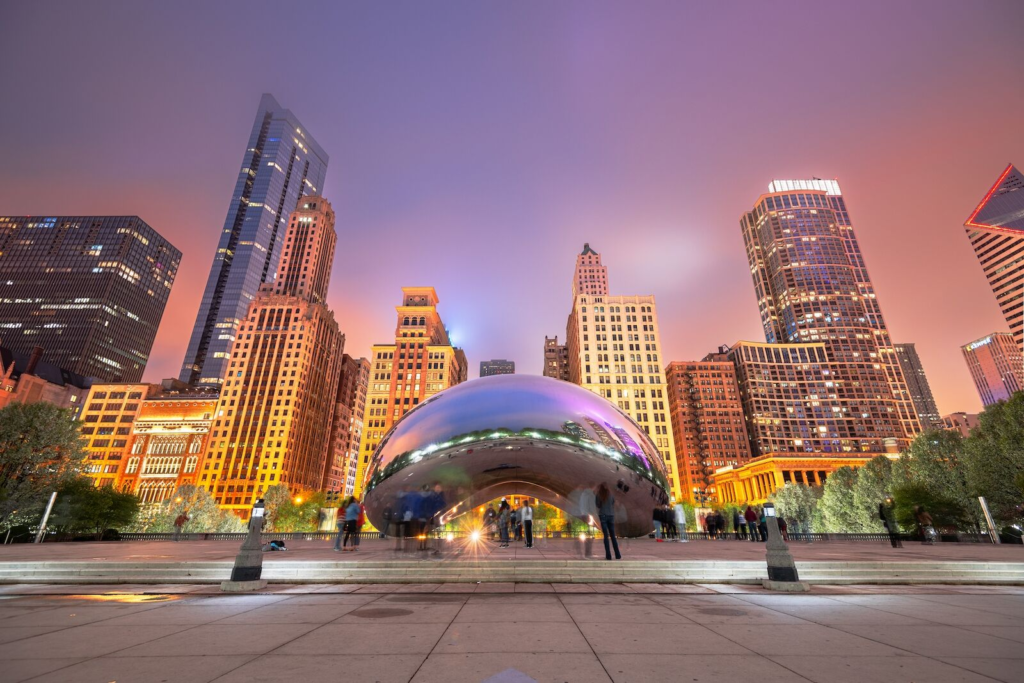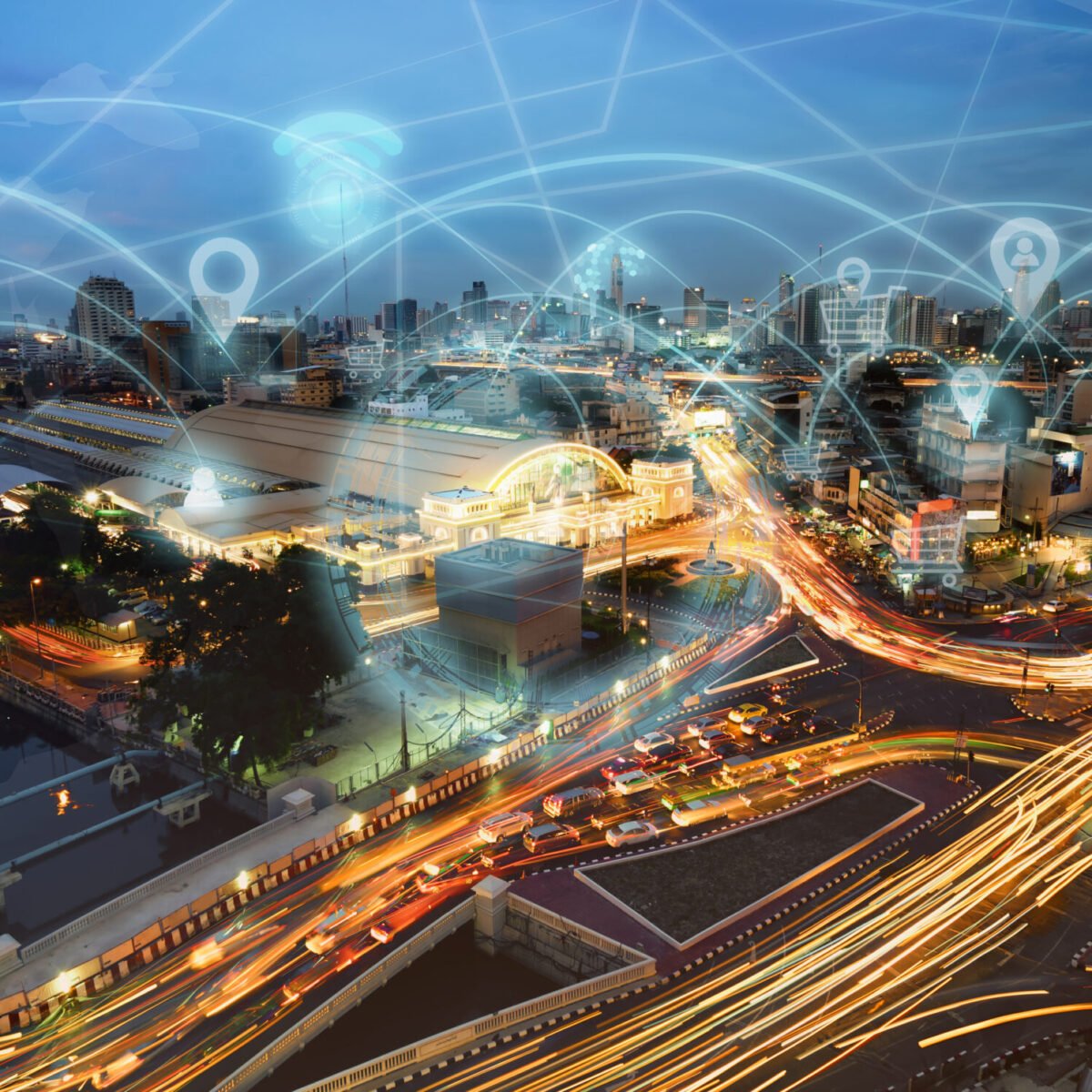As the world rapidly moves into a digital age, cities in the United States are stepping up their game. With increasing population, traffic congestion, pollution, and rising demands for energy and security, smart technology is becoming a solution for many urban challenges. Today, American cities are embracing smart technology to create safer, greener, and more efficient urban spaces.
Let’s explore how major cities like New York, San Francisco, Chicago, and Austin are using innovative tech to improve the quality of life for their residents.
What Is a Smart City?
A smart city uses digital technology, sensors, data, and the Internet of Things (IoT) to manage city operations more effectively. This includes everything from traffic control and waste management to public safety, lighting, and water usage.

Smart cities collect real-time data, analyze it, and use it to make better decisions. These changes help save money, reduce pollution, and improve services for the people living there.
Learn more about Smart Cities on SmartCitiesWorld
1. New York City: The Digital Leader
New York City, one of the most populated cities in the U.S., is leading the way in smart city transformation. The city’s NYC Smart City initiative includes advanced traffic systems, smart lighting, and free high-speed public Wi-Fi.

- Traffic Flow Optimization: NYC uses AI-powered traffic signals that adjust in real time to reduce congestion.
- Smart Waste Management: Bigbelly trash bins send alerts when full, improving collection schedules.
- LinkNYC: Over 10,000 kiosks across the city offer free Wi-Fi, charging ports, and emergency calling.
Visit NYC’s Smart City Projects
2. San Francisco: Sustainability Through Tech
San Francisco focuses on sustainability and clean energy through smart tech. The city is testing self-driving public transport, real-time air quality monitoring, and energy-efficient buildings.

- Sensor-Based Parking: Sensors help drivers find available parking spaces using mobile apps, cutting down emissions from cars.
- Green Building Policies: New buildings must follow strict green codes and use smart energy systems to reduce waste.
- Connected Transit Systems: Data-sharing platforms allow better route planning and coordination between buses, trains, and shared mobility.
Discover San Francisco’s Smart Initiatives
3. Chicago: Data-Driven Decisions
Chicago’s Array of Things project places sensor boxes across the city to collect environmental and urban data. This helps city planners understand temperature, air quality, noise levels, and traffic patterns.

- Smart Lighting: The city replaced over 270,000 streetlights with energy-efficient LEDs that adjust brightness based on movement.
- Crime Mapping Tools: Using predictive analytics, police can deploy officers to high-risk areas before crimes occur.
- Open Data Portal: Citizens can access public data to engage in smart city development.
Explore Chicago’s Array of Things
4. Austin: Smart Tech for Community and Mobility
Austin, Texas, is known for its innovative tech scene and has become a smart city hub focused on mobility, public safety, and digital inclusion.

- Smart Mobility Roadmap: Austin is investing in electric vehicles, car-sharing platforms, and AI traffic prediction tools.
- Autonomous Shuttles: Small self-driving shuttles are tested in certain neighborhoods to improve last-mile connectivity.
- Emergency Response Tech: Austin uses drones and connected devices to speed up disaster response and keep citizens safe.
Why Are Smart Cities Important?
Smart city technologies offer several long-term benefits:
- Reduced Pollution: Smart traffic and waste systems lower emissions and energy use.
- Better Public Safety: Data tools help first responders and law enforcement act faster and smarter.
- Improved Transportation: Real-time transit data reduces travel time and stress.
- Digital Inclusion: Free Wi-Fi and digital tools help connect underserved communities.
As cities grow, smart technology ensures urban spaces remain livable and future-ready.
Challenges Ahead
While the benefits are clear, implementing smart city solutions is not always easy. Cities face issues like:
- High Costs: Many smart technologies require heavy upfront investments.
- Data Privacy: With more sensors and cameras, concerns over surveillance and data misuse are rising.
- Digital Divide: Not all residents have equal access to smart technologies, creating gaps in digital inclusion.
To succeed, cities must find a balance between innovation, privacy, and accessibility.
The Future of Smart Cities in America
With federal and state funding growing, more U.S. cities are expected to join the smart tech movement. Smaller cities like Columbus, Ohio, and Chattanooga, Tennessee, are already showing how even mid-sized areas can make big impacts with the right tools.
Columbus, for instance, won the U.S. Department of Transportation’s Smart City Challenge and is testing electric vehicles, connected roadways, and smart logistics.
More on Columbus Smart City Challenge
Conclusion
From smart traffic lights to free public Wi-Fi, American cities are proving that technology can transform the way we live in urban spaces. Cities like New York, San Francisco, Chicago, and Austin are just the beginning. As more urban centers invest in smart infrastructure, American life will become more connected, convenient, and sustainable.
Stay updated on how your city is becoming smarter by visiting local government websites and supporting tech-friendly policies in your community.
Also read – Best 12 Rooftop Bars in the USA You Must Visit





